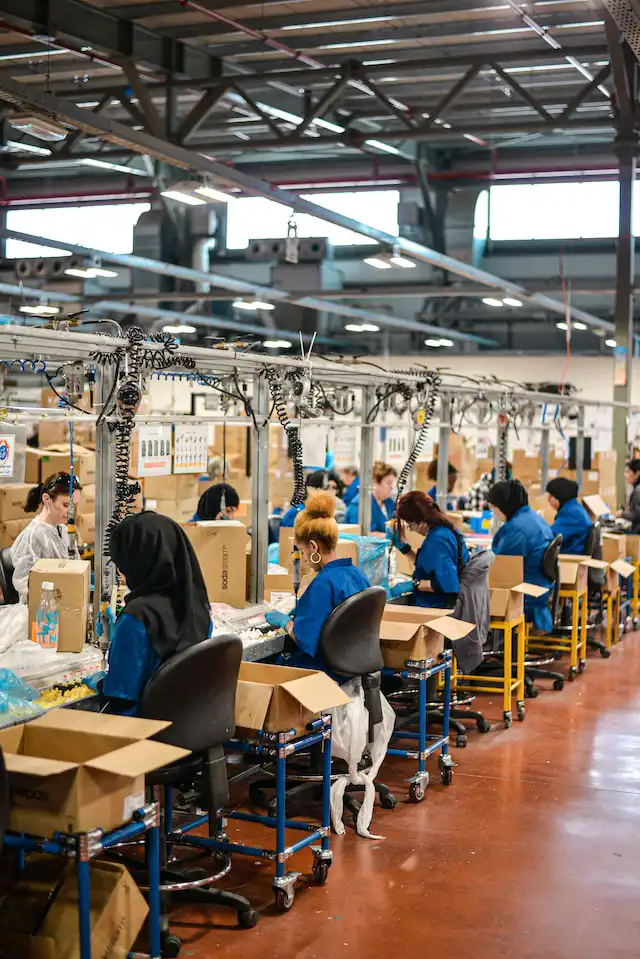
Philippines Light Electric Vehicle Market Outlook to 2027
Driven by government initiative to develop the EV industry and increasing consumer preference towards limiting carbon footprint
Region:Asia
Author(s):Mayukh Sen, Gagan
Product Code:KR1196
September 2022
110
About the Report

Philippines Light Electric Vehicle Market Size and Overview:
Philippines Light Electric Vehicle Market Segmentation
Competitive Landscape in Philippines Light Electric Vehicle Industry
Philippines Light Electric Vehicle Industry Future Outlook and Projections
Key Topics Covered in the Report
- Overview of Light Electric Vehicle Industry
- Ecosystem of Light Electric Vehicle Industry
- Value Chain Analysis of Light Electric Vehicle Industry
- Operating Model of Light Electric Vehicle Industry
- Market Size of Light Electric Vehicle Industry by Revenue, Volume, and Average Price
- Market Segmentation of Light Electric Vehicle Industry (By Type of Two/Three Wheeler EV, By Type of Four-Wheeler EV, By Type of Four-Wheeler EV Technology, By Price of Four-Wheeler EV, By Type of Four-Wheeler EV Battery, By Four-Wheeler EV Battery Capacity, By Four-Wheeler EV Brands and By Region)
- Issues and Challenges in Electric Vehicles Market
- Trends and Developments, Porter’s Five Forces Analysis, Growth Drivers, Government Regulations and Initiatives
- Impact of COVID-19
- Consumer Demographics and Consumer Preferences
- Demand Drivers of LEV Market
- Demand Analysis on the basis of TAM, SAM and SOM
- Product Analysis of Major Four-Wheeler EV Brands (Toyota, Nissan, Lexus and BYD)
- Competitive Landscape of the Four-Wheeler and Two/Three Wheeler Light Electric Vehicle Industry
- Cross Comparison of Major Four-Wheeler LEV Players on the basis of Operational Parameters (Year of Establishment, Technology Type, Model, Price, Number of Electric Vehicles Sold, Market Share on the basis of Volume, EV Range, Battery Type, and Battery Capacity)
- Cross Comparison of Major Four-Wheeler LEV Players on the basis of Financial Parameters (Revenue for 2021, Total Sales for 2021, Auto Parts’ Exports for 2021, Procurement from Suppliers for 2021, Global Sales Volume for 2021, Revenue for 2021, Global Operating Profit for 2021, Global Revenue for 2021 and Net Profit Margin for 2021)
- Company Profiles of Major Four-Wheeler LEV Players (Company Overview, Geographical Presence, Dealerships, Recent Developments, Business Model, Strengths, Pain Points, USP, Collaboration, Revenue Streams, Product Portfolio, Average Price, Operations and Recent developments)
- Company Profiles of Major Two/Three-Wheeler LEV Players (Company Overview, Operations, Strenghts, Recent developments, Product Portfolio, Business Strategies and Pain Points)
- Future Market Size of Light Electric Vehicle Industry by Revenue, Volume, and Average Price
- Future Market Segmentation of Light Electric Vehicle Industry
- Analyst Recommendations
- Industry Speaks
Products
Time Period Captured in the Report:
Historical Period: 2017-2022
Forecast Period: 2023F-2027F
Companies
Key Segments Covered in Philippines Light Electric Vehicles Industry
By Type of Two/Three Wheeler EV
E-Trikes
E-Motorcycles
By Type of Four-Wheeler EV
Passenger Car
Light Commercial Vehicle
By Type of Four-Wheeler EV Technology
HEV
PHEV
BEV
By Price of Four-Wheeler EV
Less than PHP 2,000,000
PHP 2,000,000-4,000,000
More than 4,000,000
By Type of Four-Wheeler EV Battery
Nickel Metal Hydride Battery
Lithium-Ion Battery
Nickel Manganese and Cobalt Battery
By Four-Wheeler EV Battery Capacity
Less than 2 kWh
2-20 kWh
20-40 kWh
More than 40 kWh
By Four-Wheeler EV Brands
Toyota
Lexus
Nissan
BYD
By Region
Ilocos
Central Luzon
National Capital Region
Western Visayas
Central Visayas
Eastern Visayas
Mimaropa
Mindanao Region
Caraga
Bikol Region
Caragan Valley
Cordillera Administrative Region
Philippines Light Electric Vehicle Market Players
Electric Two-Wheelers
NWOW
Inokim
Maeving
KYMCO
Motor Star
Electric Three-Wheelers
Bemac
Terra Motors
Tojo Motors
SunE
Electric Four-Wheelers
Toyota
Nissan
BYD
Lexus
BMW
Audi
Porsche
Jaguar
Table of Contents
1. Executive Summary
1.1. How is Two/Three-Wheeler LEV Market Positioned in Philippines?
1.2. How is Four-Wheeler LEV Market Positioned in Philippines?
2. Market Overview of LEV Industry in Philippines
2.1. Overview of the LEV Industry in Philippines
2.2. Ecosystem of Major Entities in Philippines LEV Market
2.3. Different Stages in LEV Manufacturing Process
2.4. Operating Model of LEV Industry in Philippines
2.5. Value Chain Analysis of LEV Market: Two-Wheeler and Overall
3. Market Size of LEV Industry in Philippines, 2017-2022
3.1. Market Size of Two/Three-Wheeler LEV Industry in Philippines on the basis of Revenue, Volume and Average Price, 2017-2022
3.2. Market Size of Four-Wheeler LEV Industry in Philippines on the basis of Revenue, Volume and Average Price, 2017-2022
3.3. Market Size of LEV Industry in Philippines on the basis of Revenue and Volume, 2017-2022
4. Market Segmentation of LEV Industry in Philippines, 2022
4.1. By Type of Two/Three-Wheeler EV (E-Trikes and E-Motorcycles)
4.2. By Type of Four-Wheeler EV (Passenger Car and Light Commercial Vehicle)
4.3. By Type of Four-Wheeler EV Technology (HEV, PHEV and BEV)
4.4. By Price of Four-Wheeler EV (Less than PHP 2,000,000, PHP 2,000,000-4,000,000 and More than PHP 4,000,000)
4.5. By Type of Four-Wheeler EV Battery (Nickel Metal Hydride Battery, Lithium-Ion Battery, Nickel Manganese and Cobalt Battery)
4.6. By Four-Wheeler EV Battery Capacity (Less than 2 kWh, 2-20 kWh, 20-40 kWh and More than 40 kWh)
4.7. By Four-Wheeler EV Brands (Toyota, Lexus, Nissan and BYD)
4.8. By Region (Ilocos, Central Luzon, National Capital Region, Western Visayas, Central Visayas, Eastern Visayas, Mimaropa, Mindanao Region, Caraga, Bikol Region, Caragan Valley and Cordillera Administrative Region)
5. Industry Analysis
5.1. Trends and Developments in Philippines LEV Market
5.2. Porter Five Forces Analysis: Philippines LEV Market
5.3. Growth Drivers of Philippines LEV Market
5.4. Government Rules and Regulations in Philippines LEV Market
5.5. Government Initiatives in Philippines LEV Market
5.6. Issues and Challenges in Philippines LEV Market
5.7. Impact of COVID-19
6. Demand Analysis
6.1. Demand Drivers of LEV Market in Philippines
6.2. Consumer Demographics and Consumer Preferences
6.3. TAM, SAM and SOM of Two/Three Wheeler LEV Market, 2021
6.4. TAM, SAM and SOM of Four-Wheeler Wheeler LEV Market, 2021
7. Competitive Landscape
7.1. Product Analysis
7.2. Company Profiles of Four-Wheeler EV Brands/Manufacturers: Toyota Philippines, Nissan Philippines and BYD Philippines
7.3. Company Profiles of Two/Three-Wheeler EV Brands/Manufacturers: Tojo Motors, NWOW and Bemac
8. Future Market Size of Philippines LEV Industry, 2022-2027E
8.1. Future Market Size of Two/Three-Wheeler LEV Industry in Philippines on the basis of Revenue, Volume and Average Price, 2022-2027E
8.2. Future Market Size of Four-Wheeler LEV Industry in Philippines on the basis of Revenue, Volume and Average Price, 2022-2027E
8.3. Future Market Size of LEV Industry in Philippines on the basis of Revenue and Volume, 2022-2027E9.4. Future Segmentation of Electric Vehicle Industry by Type of Electric Vehicle (4-Wheeler and 2-Wheeler) on the basis of Volume and Value 2021-2026E
9. Future Market Segmentation of Philippines LEV Industry, 2022-2027E
9.1. By Type of Two/Three-Wheeler EV (E-Trikes and E-Motorcycles)
9.2. By Type of Four-Wheeler EV (Passenger Car and Light Commercial Vehicle)
9.3. By Type of Four-Wheeler EV Technology (HEV, PHEV and BEV)
9.4. By Price of Four-Wheeler EV (Less than PHP 2,000,000, PHP 2,000,000-4,000,000 and More than PHP 4,000,000)
9.5. By Type of Four-Wheeler EV Battery (Nickel Metal Hydride Battery, Lithium-Ion Battery, Nickel Manganese and Cobalt Battery)
9.6. By Four-Wheeler EV Battery Capacity (Less than 2 kWh, 2-20 kWh, 20-40 kWh and More than 40 kWh)
9.7. By Four-Wheeler EV Brands (Toyota, Lexus, Nissan and BYD)
9.8. By Region (Ilocos, Central Luzon, National Capital Region, Western Visayas, Central Visayas, Eastern Visayas, Mimaropa, Mindanao Region, Caraga, Bikol Region, Caragan Valley and Cordillera Administrative Region)
10. Analyst Recommendations
11. Industry Speaks
12. Research Methodology
12.1. Market Definitions and Assumptions
12.2. Abbreviations
12.3. Market Sizing Approach
12.4. Consolidated Research Approach
12.5. Understanding Market Potential through In-Depth Industry Interviews
12.6. Primary Research Approach
12.7. Limitations and Future Conclusion
Disclaimer Contact UsWhy Buy From Us?

What makes us stand out is that our consultants follows Robust, Refine and Result (RRR) methodology. i.e. Robust for clear definitions, approaches and sanity checking, Refine for differentiating respondents facts and opinions and Result for presenting data with story

We have set a benchmark in the industry by offering our clients with syndicated and customized market research reports featuring coverage of entire market as well as meticulous research and analyst insights.

While we don't replace traditional research, we flip the method upside down. Our dual approach of Top Bottom & Bottom Top ensures quality deliverable by not just verifying company fundamentals but also looking at the sector and macroeconomic factors.

With one step in the future, our research team constantly tries to show you the bigger picture. We help with some of the tough questions you may encounter along the way: How is the industry positioned? Best marketing channel? KPI's of competitors? By aligning every element, we help maximize success.

Our report gives you instant access to the answers and sources that other companies might choose to hide. We elaborate each steps of research methodology we have used and showcase you the sample size to earn your trust.

If you need any support, we are here! We pride ourselves on universe strength, data quality, and quick, friendly, and professional service.















